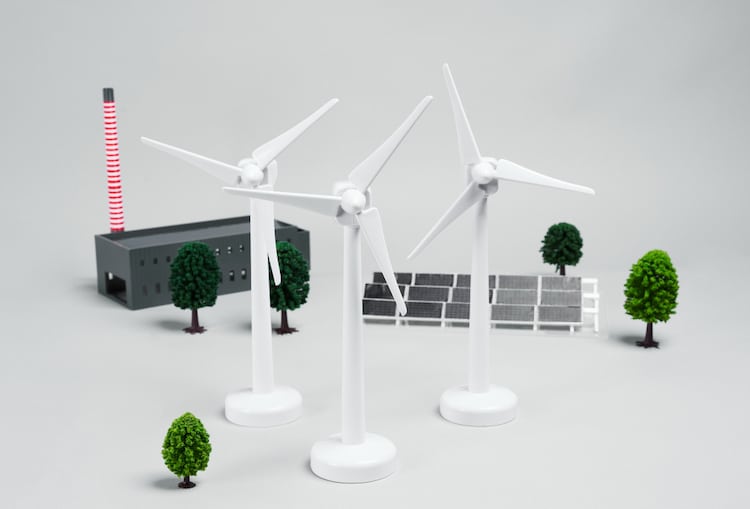Next to the wind, the sun is one of the most important energy sources of the future. It is environmentally and climate-friendly and can be used with the help of solar cells. In order to provide a sufficient amount of energy, however, millions of solar cells are required. This inevitably raises the question of what happens to the photovoltaic systems once they have reached their service life of at least 20 to 30 years. Responsible recycling is the keyword here.
Many components of PV systems can be reused
Solar panels consist of various components, up to 95 percent of which can be recycled, reused in new solar panels or used in other products. If they are used in new PV systems, their life cycle is extended and fewer modules have to be reproduced. Simply disposing of disused modules would therefore be an enormous waste of raw materials. Circular economy is the key concept. It is considered to be an essential because efficient production concept and is therefore of great macroeconomic importance.
For PV systems, this specifically means only disposing of those that can no longer be used or repaired. Because a solar module consists of various components such as glass, aluminum or stainless steel, cadmium, lead and silicon, which are firmly connected to one another by gluing or laminating. As a result, with a small number of components, the value of the materials obtained through recycling is even less than the cost of recycling.
Ongoing new developments and intensively promoted materials research give hope that companies will develop innovative methods with which valuable raw materials can be preserved and reused.
Different methods of recycling solar modules
According to the WEEE directive (Waste Electrical and Electronic Equipment) of the European Union, solar panels must have a minimum recycling rate of 80 percent. With many devices, up to 95 percent of the components of a disposed solar module can even be recycled.
In Germany, too, the disposal of PV systems is stipulated by law. Manufacturers, sales companies and dealers are obliged to take back the modules free of charge and to dispose of them properly. But consumers also have the option of disposing of used PV modules. At a municipal recycling center, the usual amounts of 20 to 50 items for a normal household can be handed in free of charge.
If a large number of solar modules, eg from commercial systems, have to be disposed of, this is usually done on the initiative of the system operator, who commissions external service providers with the disposal. Many solar companies are members of the industry-wide take-back system PV Cycle. This organizes the recycling of the solar panels or solar modules. In principle, both mono- and polycrystalline solar modules can be recycled. Depending on their condition, either the modules that are still functional are processed and reused, or the valuable raw materials are extracted from the defective solar modules and then recycled. This saves valuable resources.
Companies face up to their responsibility when it comes to resource protection
companies like that JES.Groupwhich specializes in the sale of green electricity, PV systems and large-scale solar parks, have set themselves high sustainability goals.
© Jonas Holtz, JES.Group
Jonas Holtz, Managing Director of the JES.Group:
“At the JES.Group we have a clear goal in mind: we want to turn private households into heroes of the energy transition through solar energy. An important aspect, which will also become more important in the future, is the disposal of disused PV systems. Thanks to their long life expectancy of around 30 years, solar systems are extremely sustainable in terms of energy. According to a study by the Federal Environment Agency, a PV system generates more energy after just one to two years than was used for its production. But what about the raw materials? Here’s the good news: even after a PV system has reached the end of its useful life, most of its components can be recycled. In fact, the European Union’s WEEE (Waste Electrical and Electronic Equipment) Directive even prescribes a minimum recycling rate of 80%. Even if the JES.GROUP systems have not been active for 20 years, the topic is already on our agenda. So you can be sure that we will also meet our sustainability standards when recycling PV systems in the usual JES quality.”
It is therefore the task of solar companies not only to develop more and more modern PV systems, but also to think outside the box of production and to look for methods that extend the life cycle of the valuable solar module components. This will help ensure that important raw materials are not lost through hasty and thoughtless disposal.
Published by: ARKM Central Editors
